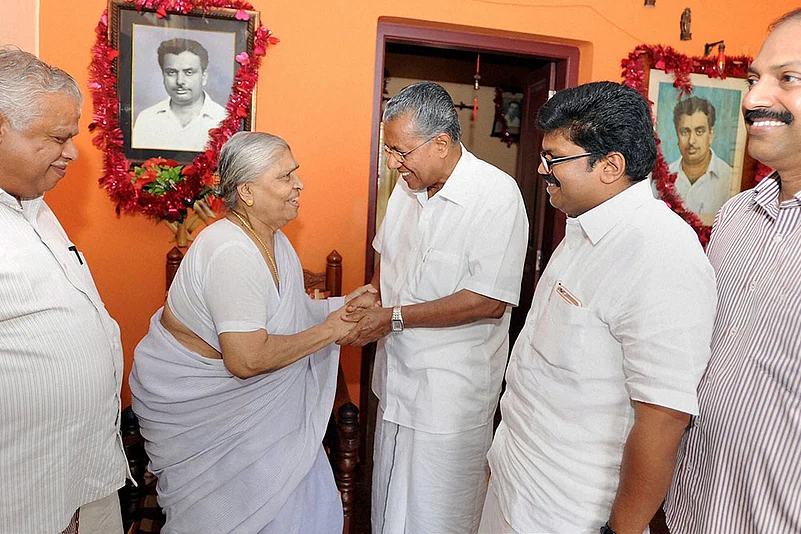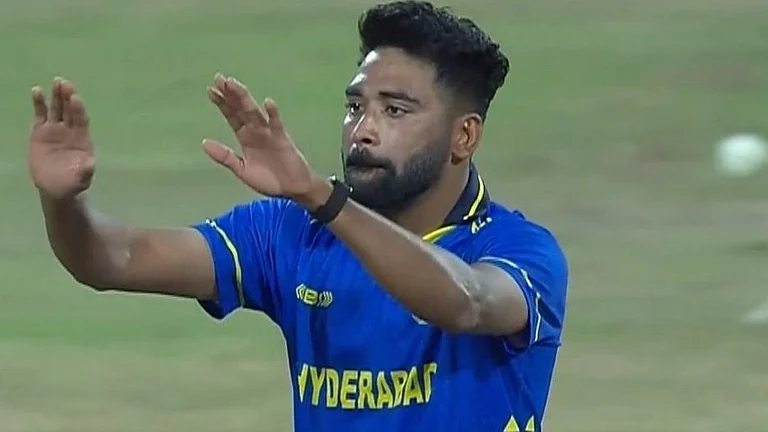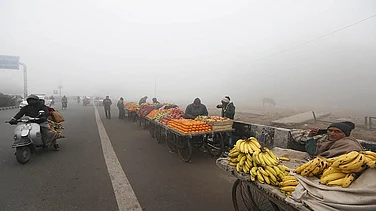Polling Matters
- In 2011, UDF (45.83% votes) won 72 seats, LDF (44.94%) 68 and the NDA (6.06%) none, of total 140
- LDF has promised 25 lakh jobs, the UDF a liquor-free state and the NDA land to the landless in two years
- Second in three seats in 2011, BJP may open only bank accounts this time, quipped A.K. Antony
***
Although Kerala is known for electing the UDF and the LDF alternately, this familiar, even predictable, pattern no longer looks inevitable. There is a bit of blurring in voters’ mood this time. Though two major pollsters, Asianet News and Institute for Monitoring Economic Growth (IMEG), a collective of statisticians, have given the Left Democratic Front a slight edge, the mood of the average voter is not all red. This partly owes to the new factor, a cash-rich national party (BJP) in alliance with a newly formed Ezhava caste-based party. So predictions have been hedged with as many probabilities as one would come up with while predicting a spell of rain in the middle of summer.
Besides a kind of apathy that seems to be setting in, the Kerala electorate has never been so confounded or confused. With a kind of near-family resemblance in the behaviour of the major alliances, the emergence of the NDA—so far a bit player in state politics—as a real, not nominal, third front has thrown into chaos the once-familiar certainties of the voting pattern. To what extent the Modi effect subsists, and how caste loyalties undercut ideology work will be crucial.
The campaigning has been riddled with accusations based on who has joined hands with whom, openly or otherwise. The BJP alleges that the Congress and the Left are playing a game of opportunism in West Bengal even as they fight it out in Kerala—“dosti in Bengal and kushti in Kerala”—while Left leaders say there is a growing cosiness between the Congress and the BJP. Even the cues that emanated from SNDP (an organisation of the Ezhava community) general secretary Vellapally Natesan in February, that Oommen Chandy is a “good chief minister” because he has been able to manage the scorpions and snakes pretty well, is being weighed carefully by voters.
The grapevine on Chandy’s backroom deals with Natesan’s newly floated Bharath Dharma Jana Sena (BDJS) has got the minorities anxious. Rumour has it that the Congress will be backed by BDJS in Tripunithara and Udhuma assembly constituencies and will, in turn, back the Natesan-led party in Kuttanad. If that happens, analysts say, the minorities who have traditionally voted Congress could well go with the LDF. But these are early days and young Muslim voters are keeping the cards close to their chest.
“Our survey shows that Muslim voters who have traditionally been with the Congress are nervous for the first time because they feel Chandy is not taking on the BJP like the Left,” says M.G. Radhakrishnan, chief editor of Asianet News. “Chandy is seen as being soft towards Natesan. There is a reason for this as the economically elite section of Ezhavas has always been anti-Left. Will this section vote Congress this time, or will it go with the BJP-BDJS alliance? That would be crucial. But when you look at the Ezhava community as a whole, most of them are poor and have always backed the Left. All this has created uncertainties as there may be changes in the voting pattern.”
The Asianet News poll survey had given the LDF 41 per cent of the voteshare and 77-82 of the total 140 seats in February, but recently reduced the vote share to 40 per cent and the seats to 75-81. Explaining the revision, Radhakrishnan says, “In February, the solar scam, Sarita’s revelations and the commission’s enquiry were clearly on the minds of the people. By April, all this was off the radar. It is no longer a major issue so there is no big anti-incumbency wave, which doesn’t, however, mean that the Left has no advantage at all. Also, more and more people are beginning to feel that Chandy is not directly responsible for the corruption charges.”
Another senior journalist, K.S. Vijayanadh, who has been touring Kerala and interviewing voters, agrees with Radhakrishnan that there is no big wave in this election. “It looks like a neck-and-neck race between the LDF and the UDF in which the former has only a slight edge,” he says. “In some constituencies, mainly in south and central Kerala where the BJP too is a force to reckon with, it is a triangular contest. But the BJP is likely to be disappointed in the northern parts where it has been hoping to make gains because of settlers from Karnataka, as most of them have left. In some of the UDF strongholds like Kalpetta and Wayanad, the LDF is giving a tough fight. And Adivasi leader C.K. Janu’s alignment with the BJP is not going to make much of a difference in the tribal areas.”
IMEG gives the LDF 82-90 and the UDF 50-57 seats in a poll survey done in the first week of May. “We had accurately predicted the results for seven successive elections, barring just one,” says director A. Meera Sahib. “This time, the UDF finds itself plagued by corruption, solar scam, price rise and water woes, especially in Wayanad. The Left is seen as less corrupt and people expect them to introduce better waste-management systems and large-scale organic farming.”
Sahib’s insistence that there is a distinct anti-incumbency wave, however, is not borne out by the seat projection for the LDF way below 100. The BJP’s increased voteshare in the general election and the local body polls has also put a spanner in the conventional voting pattern. Whether the votes will haemorrhage from the LDF votebank or the UDF votebank towards the BJP-BDJS will also be a deciding factor.
The winning margins in past elections have been quite slim—on an average less than 5,000 votes. “Usually, the BJP candidates lose their deposit but that won’t happen this time,” says political analyst Advocate Jayashankar. “They may even open their account by getting one or two seats. There is an anti-incumbency factor, but the votes that UDF loses will get divided between the LDF and the BJP.” That, in fact, is the main reason why pollsters are not predicting a clear victory for the LDF.
While the core votebanks of both the UDF and the LDF won’t budge, it is the shifting voter who may swing things this way or that. “The Kerala voter decides quite early whom to vote for,” says Sahib. So campaigning by Narendra Modi and his posse of central ministers landing in the state in hordes to add their bit may not change the minds of most voters. The campaigns, therefore, are only meant to capture the attention of the minuscule section of undecided voters. Yet, both the Congress and the BJP are spending like never before on this election. Quoting the Reserve Bank of India, The New Indian Express reported that Rs 1 lakh crore was transferred to a bank on the border with Karnataka, hinting that it could be for election funding. “That amount is four times the state’s tax revenue and the State Plan. We have seen election spending rise in Kerala over the years, but this is really huge,” says Radhakrishnan.
Adding to the election atmospherics are Modi’s geography lessons to Malayalis. While campaigning in Kerala, he compared the state’s basic health and development indices to Somalia’s. Twitterati exploded with #PoMoneModi uniting Malayalis whose pride was hurt by the PM’s words. Most backed Chandy on this one, who, in a strongly worded letter to Modi, asked him to take back the Somalia reference.
Modi also lit into Sonia Gandhi in the context of her name surfacing in the Italian courts in the AgustaWestland case, which has not gone down well with Congress leaders and a section of the voters. No one knows how all this will eventually influence the voter but one thing is clear: Kerala won’t see a winner that takes it all and gets to govern comfortably.
By Minu Ittyipe in Kochi

























